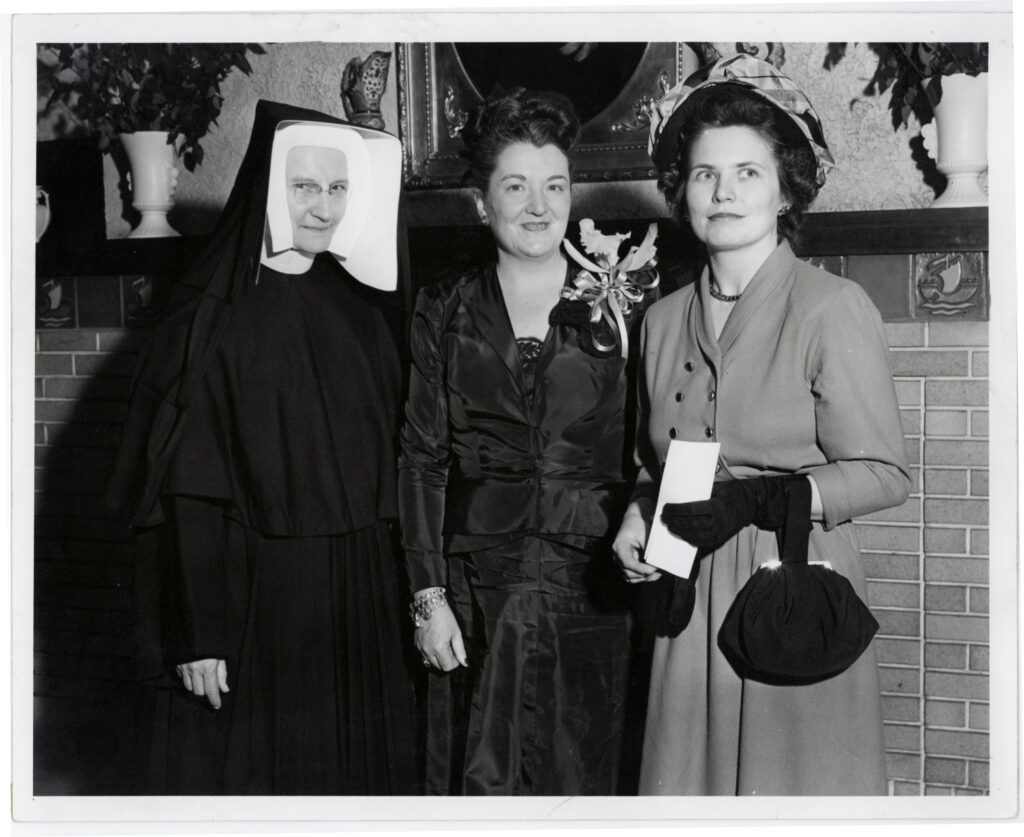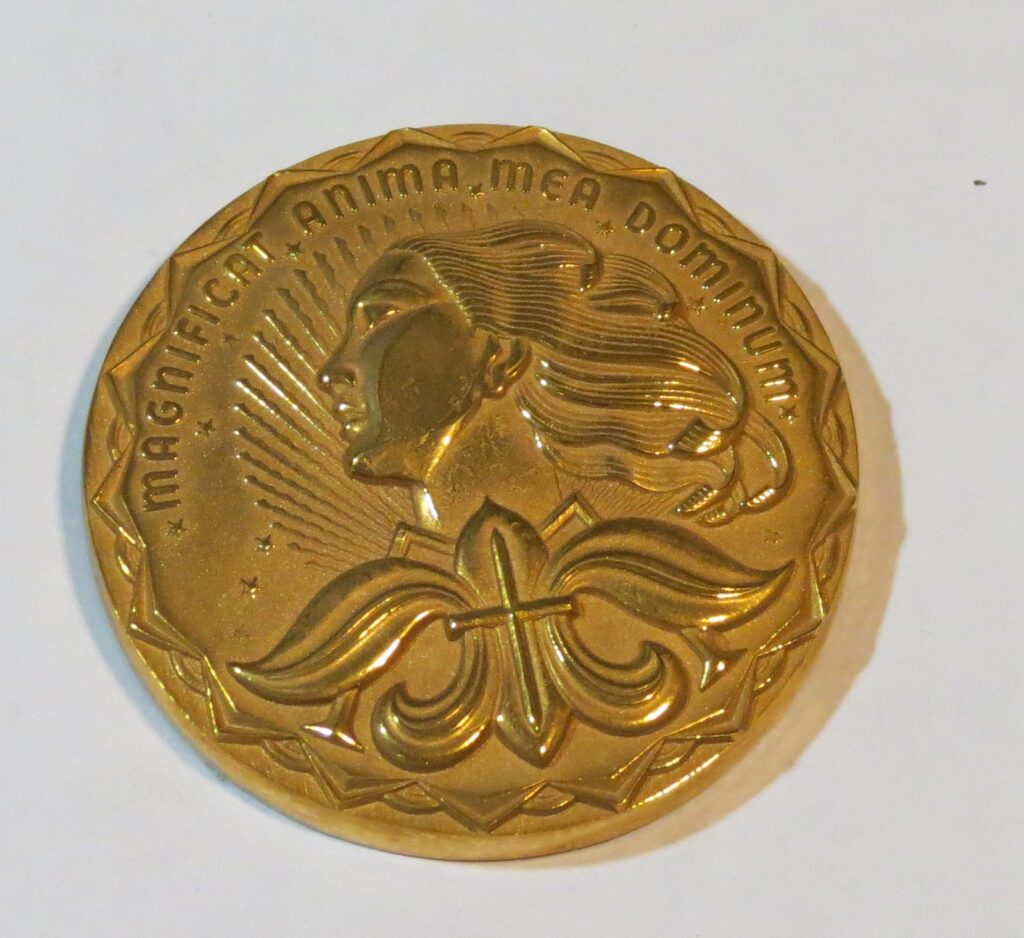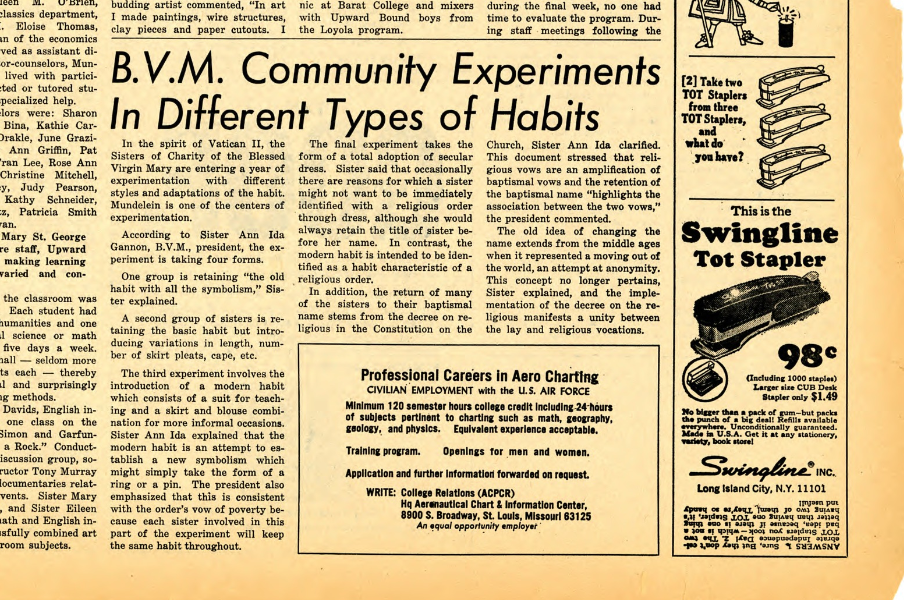In May, the New York Times began to publish a series called The Mrs. Files, exploring what the honorific Mrs. means to women and their identity. The project took shape when staff began digging through their own archives and digitizing millions of photos (I can’t even imagine!) and found that even history’s most well-known women were categorized under a card holding their husband’s name with the added title “Mrs.”. Artist Frida Kahlo, for instance, was identified as “Mrs.” Diego Rivera in the newspaper’s files.
Learn more about the New York Times Mrs. Files project here and here!
At the WLA, we have come across plenty of examples of women’s names changing in different stages of life. These instances make us stop and think about what these changes meant to these individuals, how we can usefully organize our records, and how to best identify these women to show respect to their full lives and accomplishments.

In the Mundelein College Records, we had our own “Mrs. Files”, a section of folders related to the winners of the Magnificat Medal. The Magnificat Medal was an annual award given by the college beginning in 1948 to an alumna of a Catholic women’s college who set an example for how women can shape their communities as leaders. When reprocessing the collection in 2018, I found that in the programs and publicity for the award events, as well as the archival folders, many of the early winners were only referred to by their husbands’ names, such as Mrs. Henry Mannix or Mrs. Robert Emmett Garrity.

Whatever traditions were in place at the time, I decided that it seemed right to change the archival folder titles to include the first name (and when possible, the maiden name) of the woman who was being recognized for her personal accomplishments and leadership. These names were sometimes nowhere in our records, so I searched the internet to find the names of these women. After some digging, the folder for Mrs. Henry Mannix was titled Mary Mannix, a woman who was the leader of six million American women while serving as president of the National Council of Catholic Women. And Mrs. Robert Emmett Garrity’s folder is now labeled with Mary Louise Garrity, the name of the 1953 winner who was a social worker, occupational therapist, journalist, public speaker, and teacher.
Another unique naming practice that the WLA staff have all encountered relates to the names of women religious, specifically members of the Sisters of Charity of the Blessed Virgin Mary, or BVMs, the congregation that founded and ran Mundelein. Just as a woman joining religious life traded her modern clothes for a habit and the traditional role of wife and mother for a life dedicated to serving God, a woman religious was given a completely new name to represent her new identity and life. Instead of “Mrs.” she became known as “Sister”. BVM names almost always started with Mary to honor the Virgin Mary. Following “Sister Mary,” each woman was given a name that usually honored a saint. Even their last names were rarely used in official documents.

These traditional naming practices changed in the 1960s after Vatican II. The Catholic Church began to redefine what it meant to be a man or woman religious and these individuals had more freedom in the way they dressed, their vocations, and even their names. The BVMs allowed their members to decide. Go back to their baptismal names (the name they were given at birth)? Keep the religious name they may have had for several years or even decades? Really confuse future archivists by choosing to use some kind of combo?

As discussed in a previous blog post, Digitizing Mundelein (written by Sesquicentennial Scholar and graduate Hannah Overstreet), these changes in names can cause problems for archivists when labeling records and when searching collections. We spent considerable time when preparing for our photo digitization project researching these traditions and creating a system for what names to use in different circumstances. This process helps us better understand our collections and allows us to assist researchers when they are looking for photos or documents related to an individual woman.
The way we view women’s names, titles, and these naming traditions has changed a lot throughout history as their roles and societal norms evolved. Working with archival materials as we do at the WLA and as the New York Times staff have been able to do offers an opportunity to see these changes played out in a variety of records. We as archivists have a great responsibility to label and describe records in a way that makes them easy for researchers to find the materials from a variety of different avenues. Because women’s stories have in the past been left out of historic records, it is important to us that we name these women and label their records in a way that represents and celebrates the many stages of their lives and unique aspects of their identities.
Have you changed your name or used different titles in your personal or professional life? Share your experiences in the comments!

Caroline is a Project Archivist at the WLA and a graduate of the Public History Masters Program at Loyola University of Chicago. She is a resident of Logan Square is always looking for strong coffee and good donuts.
Loyola University Chicago’s Women and Leadership Archives Blog is designed to provide a positive environment for the Loyola community to discuss important issues and ideas. Differences of opinion are encouraged. We invite comments in response to posts and ask that you write in a civil and respectful manner. All comments will be screened for tone and content and must include the first and last name of the author and a valid email address. The appearance of comments on the blog does not imply the University’s endorsement or acceptance of views expressed.
